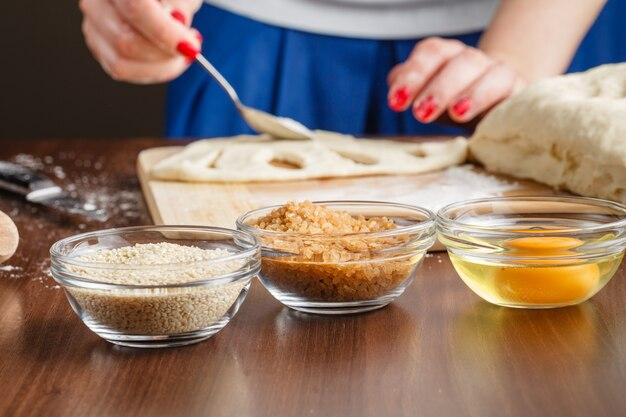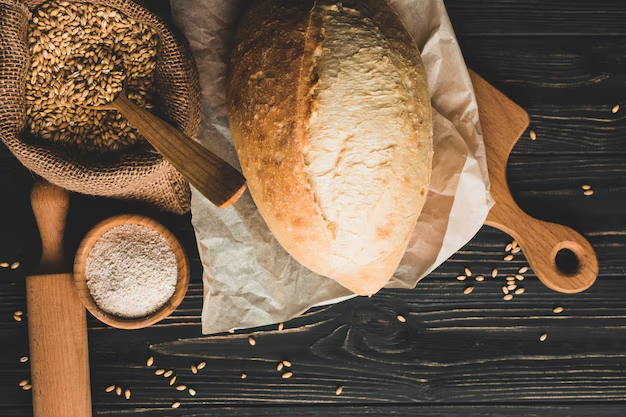Hey there, fellow bakers! Join me now as we start exploring gluten-free dessert recipes. Since 2014, I have explored gluten-free baking, and I have amassed a lot of useful knowledge. Get ready to make great-tasting desserts by exploring gluten-free cooking techniques.
The Flour Dilemma
The discussion starts with flour basics. When baking gluten-free, you need ingredients that are different from what you use for standard baking with wheat flour. Since gluten-free baking needs special treatment, we need to adjust our flour mix by trial and error.
Here’s the deal:
- Blend various flour types with starches to achieve your goal.
- Test out several brands until you locate the perfect flour blend.
The result will fail when you just replace a specific gluten-free flour with a blend in your baking mix.
Binding It All Together
Regular baking uses gluten as its holding element. The recipe demands something to keep ingredients fused together when gluten stays absent. Enter xanthan gum or guar gum4. Baked goods labeled with pre-added xanthan gum and guar gum need no additional binder.
Moisture is Key
Gluten-free flour types need extra moisture to stay hydrated. Foods using gluten-free flours contain more moisture so we need to provide the right water content to them. Your baked goods need extra moisture which comes from milk, vegetable oil, egg products, or brown sugar.
Flavor Boosters
Special gluten-free flours can lack a pleasant taste when consumed. No worries! Just amp up the flavor. When baking with gluten-free flour, use vanilla extract to improve the taste. Cinnamon’s great, too. These powders need extra liquid to hide the unique texture in the flour mix.
Measuring and Mixing Magic
Quality baking in gluten-free recipes depends on accurate measurements and processes. When you own a kitchen scale, you should start using it. If not, measure carefully. Mixing should stop when achieved. Mixing your ingredients thoroughly a few times will result in a dense cake.
The Waiting Game
Patience, young padawan. Your batter needs 30 minutes of resting before you put it in the oven. The timeout period lets the flour absorb moisture while beating removes its gritty texture.
Baking Time and Temperature
Gluten-free baking takes longer than regular baking requires. Leave the oven door shut to protect the baking temperature. Use the toothpick test to examine baked goods until the tester pulls out clean without particles5.
Cool It
The structures of gluten-free treats break down when they are still warm. Only touch the treats when they reach room temperature. Trust me, it’s worth the wait.
Storage Smarts
Seal your gluten-free baked items in an airtight holder to store them at normal room temperatures for four days. Simply freeze excess baked items since you can’t have too many of them in your collection. It actually keeps them fresher longer.
Conclusion
Use your experiments to learn and enjoy the process of baking without gluten. Change recipe components until you achieve your desired results. Happy baking!
Want more gluten-free inspiration? Explore our treasure trove of recipes and take your baking skills to the next level!



